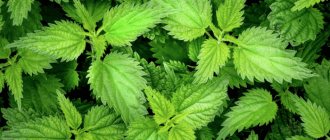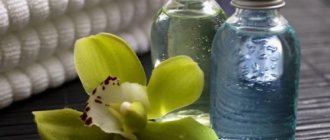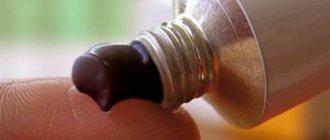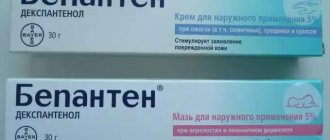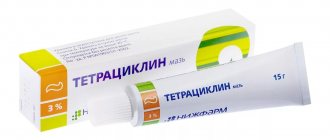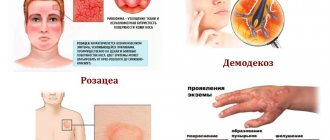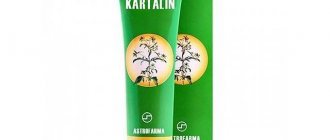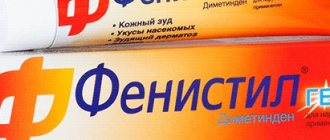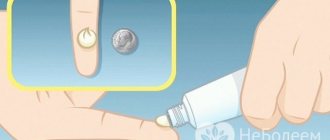Why does pus appear in a closed wound?
Pus is a cloudy exudate that appears as a result of inflammation of damaged tissue. The cause of the development of the pathological condition is infection of the wound surface. Such wounds need to be pulled out with ointments.
Factors that provoke the onset of the inflammatory process:
- extensive wound, burn;
- puncture, bite, crush injury;
- significant contamination of the affected area;
- violation of aseptic rules when treating a wound, soil residues, and other contaminants in the tissues;
- low immunity;
- avitaminosis;
- increased environmental humidity;
- late seeking medical help;
- the presence of foci of chronic infection - internal infection. Bacteria enter the wound through the bloodstream.
Purulent discharge has an unpleasant, in some cases fetid, odor. The color of the exudate ranges from white to yellow-green, bluish, green. At the initial stages of the inflammatory process, the masses are liquid, then thicken. They need to be pulled out with ointments.
Pathogenic microorganisms found in pus include:
- staphylococcus;
- gonococcus;
- streptococcus;
- meningococcus;
- coli;
- clostridia;
- Proteus;
- others – brucella, candida, salmonella.
In rare cases, when carrying out bacterial culture, the pathogen is not detected.
In this case, they talk about the lysis of bacteria or a non-infectious cause of inflammation. Closed wounds are an ideal breeding ground for a variety of flora due to stable temperature and humidity. The lack of sufficient antibacterial action to draw them out contributes to the activation of pathogenic microorganisms in the pus.
Signs of inflammation
Signs of a purulent process are divided into local and general. At the location of the damage, the following is observed:
- hyperemia;
- pain - dull, bursting. In the presence of a strong crust - twitching;
- exudate formation;
- development of edema in the place from which pus should be drawn out;
- local increase in temperature;
- dysfunction of an organ or limb;
- with prolonged suppuration. The skin around a closed wound becomes purple and bluish;
- discharge from the wound - there is an odor, a stench. Color yellow, yellowish-green.
Pieces of necrotic tissue are found on the bandage. The amount of exudate may vary. It needs to be pulled out with ointments.
General signs of a purulent process are associated with intoxication of the body by the results of bacterial activity. The patient has:
- general weakness;
- loss of appetite;
- sweating;
- increase or decrease in temperature;
- headache;
- the level of leukocytes in the blood is increased. ESR accelerates, anemia develops;
- Protein and urea are found in the urine.
Any changes in the condition of a closed wound require the attention of a doctor; do not use ointments or other means for traction yourself. It is better to visit the surgeon again. To undergo treatment of injuries rather than end up in a purulent-septic or intensive care unit.
When not to self-medicate
Any purulent abscess on the body must be treated competently by first contacting a dermatologist. The doctor will rule out diseases whose symptom is furunculosis. These could be kidney pathologies, cancer, dermatological problems, hormonal imbalance, sexually transmitted diseases, etc.
You should definitely go to the hospital if:
- the intensity of the pain syndrome increases;
- it is impossible to move the arm, finger, or leg on which there is a boil;
- the purulent process spreads further, despite the use of antibiotics;
- an abscess was found in a child or pregnant woman;
- general condition worsens, accompanied by increased body temperature, headache, weakness, loss of appetite;
- the inflamed area darkened, turned blue, and began to turn black.
Preparations in the form of ointments for boils and purulent acne are effective at a certain stage of development of the inflammatory process. When deciding which ointment helps, you need to consider possible side effects and contraindications. It is better to entrust the treatment to a professional who will take into account all the points and prescribe the appropriate treatment.
Ointments that draw pus from a wound
Ointments that draw out purulent masses from a closed wound are used for minor inflammatory processes. In such cases, surgical examination and treatment of the affected area is not carried out. The patient's general condition is not impaired, the risk of developing sepsis is minimal.
Such drugs can be used at home. Pharmacological agents suppress pathogenic microflora. They relieve the inflammatory process and prevent the development of edema. The composition of medicines and ointments includes plant extracts, antibiotics, and aseptic agents.
The general rule for using such drugs for stretching is the absence of signs of intoxication of the body. Before applying the ointment, treat the wound cavity with antiseptic solutions.
Vishnevsky
Vishnevsky ointment or liniment is a drug of official medicine. This is a thick brown ointment for pus with a specific odor.
The main components are xeroform, birch tar extract. It has an anti-inflammatory, mild irritant effect on tissue receptors. Accelerates wound healing, normalizes trophism of the skin.
The drug is indicated for all types of purulent processes - from abscess, bedsores to frostbite, trophic ulcers. The ointment is well tolerated and relieves inflammation. The only contraindication is personal intolerance.
Liniment is applied to the affected area 2-3 times a day under a bandage. The closed wound surface must first be cleaned and treated with hydrogen peroxide. The duration of treatment is determined individually and can range from 6 to 20 days.
Control of therapy with ointments to draw out pus - absence of swelling, pain, exudate, tissue epithelization. General satisfactory condition of the patient.
Do not apply liniment simultaneously with other medications. Possible interactions have not been studied.
Pregnancy and lactation are not a contraindication to the use of the ointment. Treatment of any purulent process during this period should be carried out under the supervision of a physician.
Adverse reactions associated with the use of Vishnevsky's liniment for the process of drawing out the contents are exclusively local in nature. This is redness, rash, irritation. In this case, stop using the ointment.
Ichthyol
Ichthyol ointment for drawing out pus from a closed wound is a thick, viscous, black composition. ATX code D08AX. The main active ingredient is ichthammol.
A medicine with analgesic, anti-inflammatory, wound healing and regenerative properties.
Ichthammol is incompatible with iodine-containing products. Salts of heavy metals, alkaloids. Iodine mesh and ichthyol ointment are not used simultaneously for stretching.
The drug is applied to a previously cleaned surface 2-3 times a day under a bandage. The duration of treatment is individual.
Possible irritation of the skin, redness of tissues, and the appearance of a rash after drawing out the substance. In this case, the use of ichthyol should be discontinued.
Pregnancy and lactation are not a contraindication to the use of the ointment. The drug should not get on the nipples or in the child’s mouth.
Levomekol
Levomekol is a combination drug based on the antibiotic chloramphenicol and the healing component methyluracil. The ointment is odorless and the color is white. ATX code D03AX.
The drug is not used to draw out pus from closed inflammation. The ointment is used for clean wounds, after surgery, or removal of an ingrown toenail.
Levomekol is prohibited for use in children under 3 years of age. Sterile bandages are soaked in the ointment and applied to a closed wound. It is possible to administer the drug into the body cavity using a drainage tube. The duration of treatment is 4 days.
If drawing out pus with ointment is ineffective: on day 5, a correction of prescriptions is indicated. Long-term use of the drug causes the development of resistance of pathogenic flora to the components of the drug.
Side effects for closed inflammation of a local nature. Redness, skin irritation. In this case, use of the ointment should be discontinued.
Tetracycline
Tetracycline ointment is an antibacterial agent for drawing out pus. The active ingredient is the antibiotic tetracycline. It has a bactericidal effect and does not draw out purulent masses from closed inflammations. It is used to treat purulent, trophic wounds, abscesses, and folliculitis. The active substance suppresses gram-positive and gram-negative flora.
Ointment for stretching is applied 1-2 times a day. Also treating healthy areas of the skin. A sterile bandage is applied over it. The duration of treatment depends on the patient's response. Ranges from 2 to 3 weeks.
Prohibited use:
- children's age (up to 11 years);
- individual sensitivity;
- fungal diseases;
- pregnancy and lactation.
Side effects are local. These are rashes, allergies, increased photosensitivity. In this case, use of the drug should be discontinued.
Vishnevsky balsamic liniment
The ointment, consisting of natural components and having a specific odor, is used in the treatment of any skin diseases of infectious and inflammatory origin (boils, acne, bedsores, burns and ulcers) due to its wide spectrum of action, as:
- antimicrobial agent;
- wound healing drug;
- disinfectant.
100 g of ointment contains:
- 3 g xeroform - an antiseptic substance with a drying effect;
- 3 g of tar, which accelerates the ripening process of the boil.
Since its components have softening properties, the ointment is recommended for use at stages 1, 3 and 4 of the development of the boil (with the exception of the period of ripening of the rod), in order to avoid the spread of infection. The ointment, as in the previous case, is applied to the problem area of the skin under a bandage for at least 8 hours. The cost ranges from 25 to 50 rubles.
The only contraindication for its use is hypersensitivity and allergy to the components of the drug.
How to replace ointment at home
It is impossible to remove pus from a closed wound at home when systemic complications appear. Treatment is carried out in a hospital setting, and not with traditional ointments for stretching.
For small abscesses - on a finger, arm or leg. A hypertonic solution of table salt will remove purulent masses. Ready-made hypertonic solution is sold at the pharmacy. To prepare it you will need 1 sodium chloride per 10 volumes of water. A bandage soaked in liquid is applied to the affected area.
In the recipes of folk herbalists there are recommendations for the use of baked onions and aloe leaves as an ointment for drawing out pus.
It is not advisable to treat purulent abscesses on the face yourself. This is fraught with the formation of cosmetic defects.
Purulent wounds on the heels often occur in patients with diabetes. This can develop gangrene. The wound in people with endocrine diseases should be examined by a doctor.
Medications
The concept of “pulling out” pus is figurative, and rather colloquial. There are ointments that help get rid of the purulent process faster; they are divided into 3 groups:
- Promoting the discharge of pus.
- Antibacterial.
- Wound healing.
Ointments that promote the drainage of pus
A feature of this group of ointments is the ability to soften the layers of the skin and thereby create conditions for pus to escape when the ulcers are closed:
Ichthyol
Ichthyol is rightfully considered the best for drawing out pus, an oily substance obtained from resins, and the sulfide and ammonium groups included in its composition are capable of loosening the epidermis, diluting pus, and reducing inflammation;
Vishnevsky ointment
Contains natural ingredients - tar, castor oil, xeroform, helps soften the skin, reduce swelling and inflammation, facilitates the drainage of pus.
Antibacterial ointments
They contain broad-spectrum antibiotics or antiseptics (chloramine, iodine, furazolidone and others). They are used to cleanse open purulent wounds. The range of these products is extremely wide, depending on the composition.
Levomekol
Antibacterial ointment based on the strong synthetic antibiotic chloramphenicol, which effectively affects various pyogenic microbes. In addition, the composition includes a substance that stimulates healing - methyluracil.
Treatment prognosis and possible complications
The prognosis for purulent processes is in most cases favorable if ointments are used correctly to draw out the substance from a closed wound. Factors influencing the patient's recovery:
- localization, volume of closed wound surface;
- patient's age;
- at what stage did you seek medical help?
- treatment method – surgical measures, conservative therapy;
- presence of complications;
- concomitant chronic diseases.
Complications of the purulent process are varied - from system-wide sepsis, gangrene, limb amputation to death.
Do not look for a remedy for drawing pus from a closed wound in a pharmacy or on the Internet. Especially in the presence of chronic diseases. Consult a doctor whether the wound is open or closed. It is dangerous to experiment with such processes with different ointments.
The article has been verified by the editors
Examples of drugs
The choice of medications is influenced by the stage of development of purulent inflammation. If the abscess is just forming, use agents that relieve extensive inflammation and stimulate maturation. It is advisable to apply pulling ointments to an already formed boil. Healing compounds are necessary when the head has already ruptured.
You can find many effective drugs in the pharmacy chain. However, experts do not advise resorting to self-treatment. It is better to consult a dermatologist who will select the best ointment for boils and boils.
